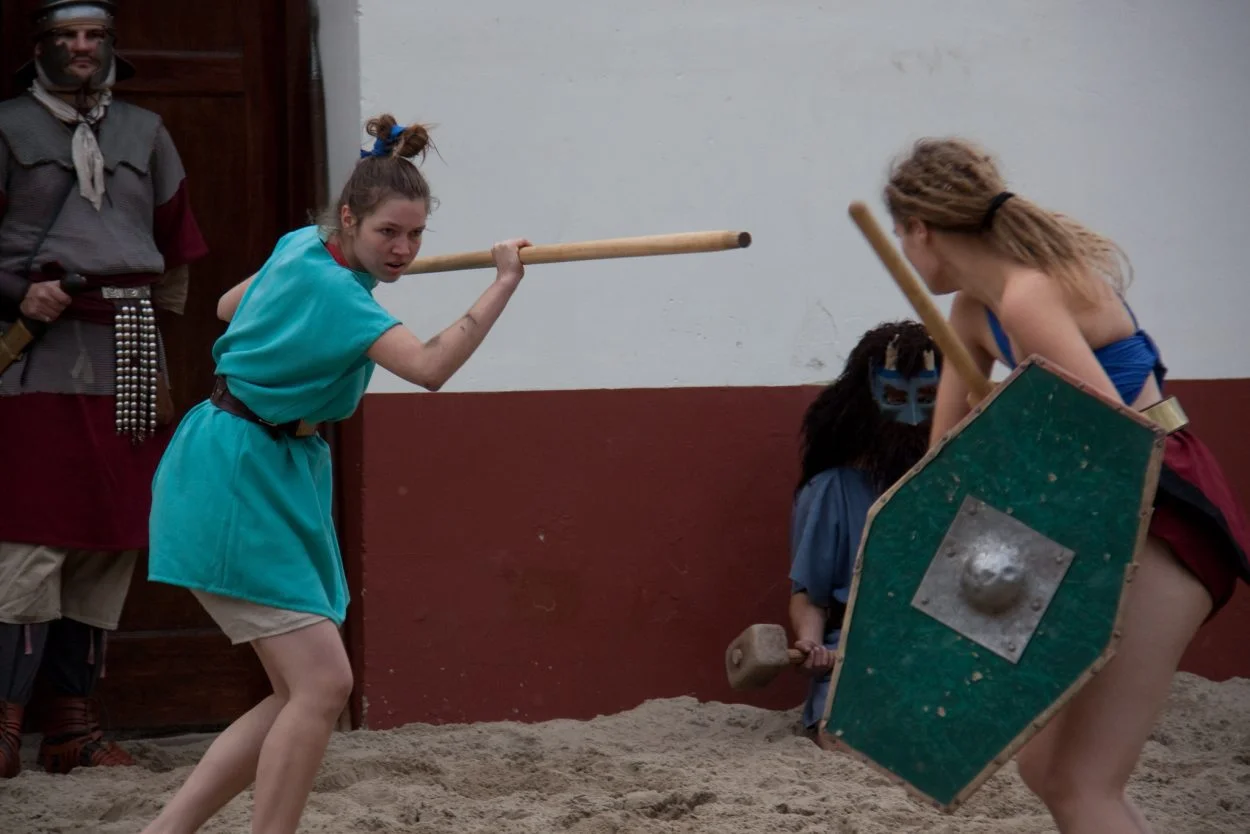The Gladiatrix were the female equivalent of the Roman Gladiator, that fought other Gladiatrix or wild animals during rare occurrences in arena games and festivals.
There are no defining Latin words from the Roman period for a Gladiatrix (a modern invention), and documented accounts or historical evidence is limited.
To the Romans, combat involving Gladiatrix was a novel event (although contemporary accounts often report in a derogatory manner), in which the combatant would most likely be pitted against fighters of similar skill and capacity.
According to the Roman poet, Decimus Junius Juvenalis, the Gladiatrix trained for gladiatura using the same training methods and weapons as men, however, there is no surviving accounts of a ludus (gladiator school) that performed such training for the female gender.
Juvenalis also implies that women of all classes, both high class (feminae), and common women (mulieres) trained in gladiatura, but it seems unlikely that a feminae would fight in the arena due to the stigma attached.
Roman society rarely cared about the actions of a mulieres, so appearing on stage as a performer (ludi), or in the arena would have little social scorn, or unlikely to bring one’s family into disrepute.
Evidence of this can be found in an inscription at Ostia Antica, which marks the arena games held in the 2nd century AD. The inscription refers to a local magistrate’s provision of “women for the sword”, which defines them as mulieres rather than feminae.
Written sources includes a contemporary account by the historian and chronicler, Cassius Dio (AD 155-235), who writes of a festival held in honour of Emperor Nero’s Mother, in which women “drove horses, killed wild beasts and fought as gladiators, some willingly, some sore against their will”.
Cassius also mentions that “Often he [referring to Emperor Domitian] would conduct the games also at night, and sometimes he would pit dwarfs and women against each other.”
In recounting the Neronian games, Publius Cornelius Tacitus (AD 56-120), relates, too, that “Many ladies of distinction, however, and senators, disgraced themselves by appearing in the amphitheatre”.
In terms of supporting physical evidence, an elaborate funeral pyre was excavated in London containing rich grave goods and oil lamps. A forensic examination of bone fragments revealed that the individual was a woman in her twenties.
Archaeologists also uncovered a lamp depicting a fallen gladiator, and others portraying gods associated to the sport, along with pinecones (traditionally burned at the arena for purification), leading to the proposition that the deceased was a Gladiatrix, referred to in UK media as “Gladiator Girl”.
Another example is the Halicarnassus Relief, a 1st or 2nd century AD depiction from Bodrum in Turkey, that commemorates the release from service of two female Gladiatrix, called by their stage names, Amazon and Achillia. Both of the figures appear bareheaded, equipped with a greave, loincloth, belt, rectangular shield, dagger and manica (arm protection).
By AD 200, Emperor Septimius Severus banned women of either class from the arena, after a gymnastic contest which probably included gladiatorial fights. Cassius Dio accounts that “women took part, vying with one another most fiercely, with the result that jokes were made about other very distinguished women as well. Therefore it was henceforth forbidden for any woman, no matter what her origin, to fight in single combat”.
Header Image – Halicarnassus Relief – Image Credit : Carole Raddato – CC BY-SA 2.0





